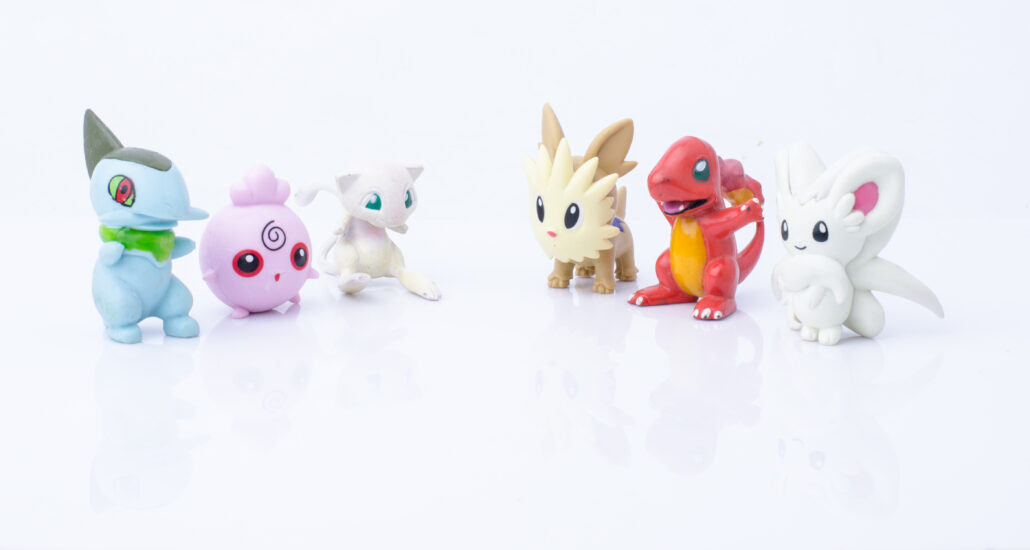Pokémon ‘evolution’ looks more like metamorphosis
Change in the natural world is much slower than in the game world

The changes that takes place among creatures in the Pokémon games looks more like metamorphosis than what the games call “evolution.”
KAMUI29/SHUTTERSTOCK
The Pokémon games have a simple premise: Kids called Trainers leave home to tame dangerous creatures. The Trainers pit their monsters against each other to make them stronger. Once a Pokémon reaches a certain level or is exposed to a certain item, it can “evolve” and transform into a larger, more powerful form.
The word “evolution,” though, may be a bit misleading for what is taking place.
“The biggest issue is that [Pokémon uses] the word ‘evolution’ to mean metamorphosis, which is completely wrong,” says Matan Shelomi. He is an entomologist at National Taiwan University in Taipei City and studies beetles from southern Taiwan. “I guess it’s catchy, but it’s a real pity they’ve used that term — especially since so few people understand what evolution actually is.”
Evolution describes how species change over time. Natural selection drives these changes. That is, individuals best suited to their environment survive and pass on their genes to their offspring. Genes are responsible for the way organisms look and behave. Over time, more and more individuals gain these useful traits, and the group evolves.
The drastic changes seen in a single Pokémon can give people the wrong impression about how evolution works, Shelomi says. Evolution occurs within populations and species of organisms, not to single organisms. Genetic changes that give rise to new traits must accumulate in a population over many generations. This can happen quickly for organisms that have super-short lifespans, such as bacteria. But for things that live longer, like larger animals, evolution generally takes place over thousands to millions of years.
So that Raichu you got after giving your Pikachu a Thunderstone? “That’s not evolution. That’s just growth,” says Shelomi. “That’s just aging.”
Leveling up
Pokémon age in a series of steps. Charmander ages to Charmeleon and then to Charizard, for instance. Each step brings changes in color, body shape and size, and ability. This aging process looks a lot like aging in insects and amphibians, says Alex Meinders. This wildlife biologist makes YouTube and TikTok videos about video game ecology under the name Geek Ecology.
Consider a monarch butterfly. It didn’t start out as a butterfly. It started as a chubby caterpillar that then became a pupa. Finally, that pupa transformed into a beautiful butterfly. This process is called metamorphosis.
Metamorphosis refers to an abrupt, dramatic physical change in an animal’s body. Insects, amphibians and some fish experience this as they transition from a larva into an adult. Many insects, like that butterfly, also go through the in-between pupa stage. Each stage looks entirely different from the others. And during the transition, tissues dissolve and form into new body parts.
The evolutions of certain Pokémon, such as the antlion-inspired Trapinch, resemble this type of metamorphosis. “Every stage in a Pokémon is just another metamorphic stage,” says Meinders.
Pupae physics
Pokémon reach these different stages by fighting. But the last thing a caterpillar would want to do is waste energy by brawling. Instead, they spend their time plumping themselves up and storing energy for what’s to come. They do this with fat. That fat provides the energy for transforming and developing new body parts, such as wings and reproductive organs. Although optional Rare Candies and supplements can help Pokémon evolve, the game creatures don’t need food to transform from stage to stage.
“In order to grow, animals have to eat,” says Shelomi. “Pokémon seem to put on weight from thin air.” And with mass seemingly created from nothing, he notes, “this violates the laws of physics.”
Take Mudbray, a mud-horse monster that weighs on average around 110 kilograms (240 pounds). When it transforms into Mudsdale, the monster balloons some 10 times in weight. But in some insect species, Shelomi says, the opposite is true. Larvae are much larger than the adults. Much of the stored energy goes into changing from — say, a fleshy grub to a hard-shelled beetle or that chubby caterpillar into a delicate butterfly. A grub that metamorphoses as fast as a Pokémon would risk harmful changes to its DNA, Shelomi says.
“This all takes some time, and you don’t want to rush things,” says Shelomi. “If you had to build a building in 20 minutes versus 20 weeks, one of those is going to be much sturdier and better built.”







